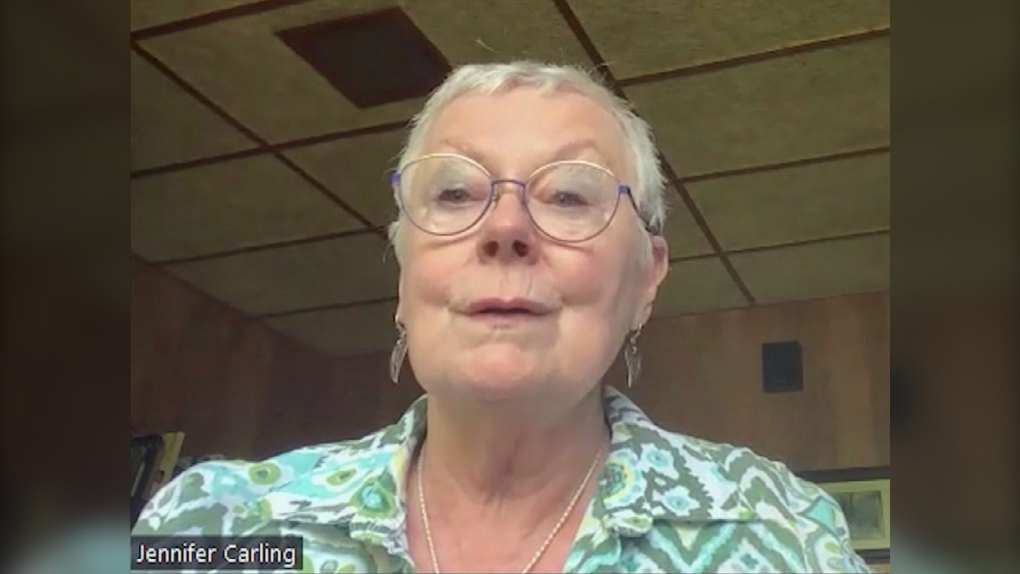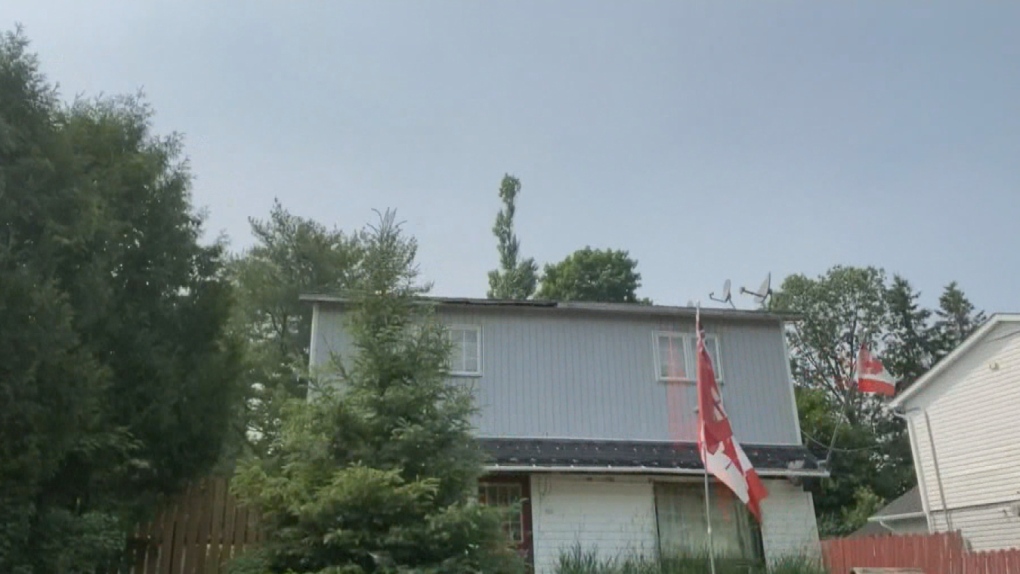Elliot Lake homeowners to get their day in court this week
It’s taken three long years just to get to this stage but there’s a sense of excitement in the voice of Jennifer Carling.
 Jennifer Carling and her husband relocated to Elliot Lake, Ont., from Toronto after falling in love with the city and the lifestyle -- but, testing shows extremely high radon levels in her home's basement. Carling speaks with CTV Northern Ontario via Zoom in June 2024. (Ian Campbell/CTV News Northern Ontario)
Jennifer Carling and her husband relocated to Elliot Lake, Ont., from Toronto after falling in love with the city and the lifestyle -- but, testing shows extremely high radon levels in her home's basement. Carling speaks with CTV Northern Ontario via Zoom in June 2024. (Ian Campbell/CTV News Northern Ontario)
Carling and two others have been lobbying the Canadian government and the Canadian Nuclear Safety Commission for three years to take the issue of radioactive backfill in Elliot Lake seriously, on Wednesday they’ll get their day in court.
Oral arguments will be heard in Toronto for the group with help from the Canadian Environmental Law Association.
“I’m very, very excited. We finally get to have the presentations made before a judge and I’m just hoping,” said Carling.
“CELA has done a phenomenal job and putting this together, we have to put this in the hands of the judge, but I just hope he realizes we have a good solid case.”
We first introduced you to Carling and others last year. The group had private testing of their properties done. Their homes had been built, like much of Elliot Lake in the 1960s but they later learned radioactive backfill had been buried underneath some properties.
 One Elliot Lake property tested positive for radon with a level of 858.7 Bq/m³. To put that in perspective, Health Canada's guideline for radon exposure is only 200 Bq/m³. (File photo/Ian Campbell/CTV News Northern Ontario)
One Elliot Lake property tested positive for radon with a level of 858.7 Bq/m³. To put that in perspective, Health Canada's guideline for radon exposure is only 200 Bq/m³. (File photo/Ian Campbell/CTV News Northern Ontario)
The results of testing the Carling home determined they had a radon level of 858.7 Bq/m³, to put that in perspective, Health Canada’s guideline for radon exposure is only 200 Bq/m³.
Radon is a radioactive gas that can cause health problems including lung cancer.
CTV News at the time had contacted Canada’s Minister of Natural Resources Jonathan Wilkson, his office said the operation of uranium mines in Ontario before 1976 was the responsibility of the province.
In the mid-1970s, a task force installed mitigate efforts and abatement tools to get the numbers down in properties.
Carling however said their fight isn’t natural radon, as the federal government maintains, it’s with the radioactive backfill that was buried below some properties and neighbourhoods.
“I will be there representing the families to make sure there is a human face to all the facts and figures he (the judge) has in front of him, to personalize it all,” said Carling.
“There certainly have health impacts and it’s not just trying to tell the story to people who don’t live there but people who do live there too also don’t understand what’s going on. It’s a challenge, it’s not a big, sexy story but it is a very real story with ramifications,” she added.
“My biggest hope and prayer is that the judge actually does define mine waste as anything that is dug up out of the earth to create a mine as opposed to the Canadian Nuclear Safety Commission’s contention that it is only mine waste when it has been refined which when you read the legislation does not read that way.”
The group isn’t anticipating an immediate answer, they’re expecting the judge will take some time to reach a decision.
“I am just so looking forward to having a resolution to this, when it’s at the back of your mind and you can’t move forward, you can’t make any plans and bearing in mind in six weeks I’ll be 75, I need to make plans for the rest of my life, I’m not going to be able to live in that house forever but I can’t do anything about it right and find a living style that’s a bit better for my demographic until all of this decision so it’s been very heavy on the mindset yet and I’ll looking forward to having an answer,” Carling said.
“The judge will make an informed decision of which I will respect.”
CTVNews.ca Top Stories

Canadian family stuck in Lebanon anxiously awaits flight options amid Israeli strikes
A Canadian man who is trapped in Lebanon with his family says they are anxiously waiting for seats on a flight out of the country, as a barrage of Israeli airstrikes continues.
Suspect in shooting of Toronto cop was out on bail
A 21-year-old man who was charged with attempted murder in the shooting of a Toronto police officer this week was out on bail at the time of the alleged offence, court documents obtained by CTV News Toronto show.
Scientists looked at images from space to see how fast Antarctica is turning green. Here's what they found
Parts of icy Antarctica are turning green with plant life at an alarming rate as the region is gripped by extreme heat events, according to new research, sparking concerns about the changing landscape on this vast continent.
DEVELOPING 2 dead after fire rips through historic building in Old Montreal
At least two people are dead and others are injured after a fire ripped through a century-old building near Montreal's City Hall, sources told Noovo Info.
Yazidi woman captured by ISIS rescued in Gaza after more than a decade in captivity
A 21-year-old Yazidi woman has been rescued from Gaza where she had been held captive by Hamas for years after being trafficked by ISIS.
A 6-year-old girl was kidnapped in Arkansas in 1995. Almost 30 years later, a suspect was identified
Nearly 30 years after a six-year-old girl disappeared in Western Arkansas, authorities have identified a suspect in her abduction through DNA evidence.
Dolphins 'smile' at each other when they play and to avoid misunderstanding, study finds
For humans, flashing a smile is an easy way to avoid misunderstanding. And, according to a new study, bottlenose dolphins may use a similar tactic while playing with each other.
Pit bulls in B.C. pet mauling tested positive for meth, cocaine, says city
Three pit bulls involved in a deadly attack on another dog last month in Kamloops, B.C., tested positive for methamphetamine and cocaine, and the city is going to court to have them put down.
Tax rebate: Canadians with low to modest incomes to receive payment on Friday
Canadians who are eligible for a GST/HST tax credit can expect their final payment of the year on Friday.


































